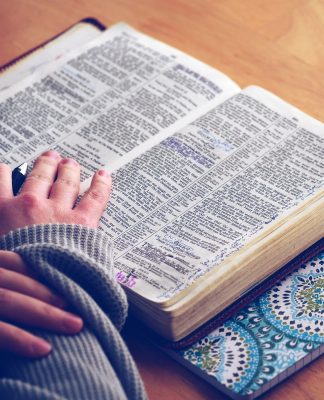The term “soulmate” implies a special affinity, understanding, or powerful bond that exists between one person and another. The ineffable experience of being known by and knowing between one person and another. The ineffable experience of being known by and knowing another lends itself to the mythical image of soulmates as two wandering souls finally reuniting. Why is it that few people resonate with you in this way, while many, who otherwise may be desirable partners, do not? And, from a psychological point of view, what is going on in soulmate relationships?
In a heightened way, soulmates experience communication at non-verbal as well as verbal levels. Nuances of communication occur through facial expresssion and body language, especially whenyou are tuned-into another person. At an unconscious level we communicate with others and certainly this is so with a soulmate. The sensation of ressonating with another has been described as right brain dialogues between the relational unconscious of two people. 1 Not all communication is verbal, and, in the context of attachment, right brain-to- right brain auditory prosodic communications—the patterns of tone in your voice—are a vehicle of implicit communication. 2 The right hemisphere, as opposed to the more analytic left brain, processes the “music” behind our words, including variations in stress and pitch. 3 You experience this when you are highly attuned to another person: when you sense a particular mood from a vocal tone, or “hear” another aspect of a conversation that is otherwise being conveyed in words. In intensely intimate relationships, such broader aspects of communication register both implicitly and explicitly. Although unconsiously we communicate with everyone, in certain relationships our relational unconscious is more tuned-in to the other.
Typically, those who describe interactions with a soulmate note communication based on eye contact. The eyes are used to express, receive, and share experience of every kind of emotion, and many people fall in love with those into whose eyes they have permitted themselves to look and let themselves be seen. 4 Through eye contact people experience mutual awareness of mutual excitement, and, given that the eyes are critical in mutual emotional awareness, “there is no greater intimacy than the inter-ocular interaction.” 5 You probably already knew this was true.
The soulmate experience has to do with analogous emotion, a concept that has been described as inter-affectivity or inter-subjectivity—the sharing of subjective experiences. The righthemisphere of our brain is dominant for subjective emotional experiences, and the transfer of affect (the biological core of emotion) between the right brains of a dyad, involving the interaction and affective resonance of two minds and two bodies, is described as “inter- subjectivity.” 6 At moments of deep contact, inter-subjectively shared emotions are deepened in intensity and sustained in time. 7 One’s capacity for intimacy, determined by sequences of inter- affectivity between a child and its caregivers, is based primarily on affective resonance or affective contagion. 8 Affective resonance is a mirroring of the emotion of the other, where the emotional expression of another person activates that same emotion in you. Affective contagion is the experience of being “infected” with another’s feelings. Thus, intimacy has been described as an inter-affective process “through which the inmost parts of the self are communicated to the other by tangible displays of affect.” 9 Thus, the here-and- now interactions between two people interface with the past scripts in the childhood of each individual, and thus, affect is the central force driving intimacy.
But can romantic or passionate love that has soulmate status last? Researchers who studied the possibility that romantic love can remain present in a long-term relationship (including intensity, engagement, and sexual interest, but without the obsessional component typical of early stages of romantic relationships) found that romantic love can and does exist in long-term marriages and is associated with well-being, marital satisfaction, and high self-esteem. 10 If we consider the affects that would promote such long-term satisfaction in relationships, they would necessarily include interest and novelty. The echoing of intellectual interests can bind two people together as soulmates. And certainly, novelty that allows growth to take place is a pleasurable sharing between people. Interpersonal novelty is generally unanticipated, is organized by what takes place between two minds, and allows us to grow. 11 Mutual excitement and enjoyment of sexual intimacy promote interest and novelty, yet they may also be a result.
Knowing and accepting the other are common descriptors of soulmate relationships, yet these are aspects of other committed relationships as well. Trust between two people in the beginning of a relationship enables the kind of sharing that can create a soulmate. But perhaps above all else is the capacity to trust the soulmate relationship and maintain its intensity by successfully navigating through the moments when positive feelings are disrupted.
(For information about my books, please see my website: www.marylamia.com)
Endnotes
1 Dorpat, T.L. (2001). Primary process communication. Psychoanalytic Inquiry, 3, 448-463.
2 Schore, A. (2012). The Science of the Art of Psychotherapy. New York: Norton.
3 Schore, A. (2012), cited above.
4 Tomkins, Silvan S. (1962/1991). Affect Imagery Consciousness. New York: Springer.
5 (Tomkins, S.S. (1962/1991), cited above, p. 385).
6 Schore, A. (2012), cited above.
7 Whitehead, C. (2006). Neo-psychoanalysis: A paradigm for the 21 st century. Journal of the
Academy of Psychoanalysis and Dynamic Psychiatry, 34, 603-627.
8 Kelly, V. (1996). Affect and the redefinition of intimacy. In D. Nathanson (Ed.) Knowing
Feeling. New York: Norton.
9 Kelly, V. (1996), cited above, p. 73.
10 Acevedo, B. & Aron, A. (2009). Does a Long-Term Relationship Kill Romantic Love? Review
of General Psychology. 13, 59–65.
11 Bromberg, P. (2009). Truth, human relatedness, and the analytic process: An
interpersonal/relational perspective. International Journal of Psychoanalysis, 90.


 As clinical psychologist and psychoanalyst I work with adults, adolescents, and preteens in my Kentfield, California private practice. I am also a professor at the Wright Institute in Berkeley, California. Teaching the public about the psychology of human behavior has been something I've done for over 35 years. For nearly a decade I hosted a weekly call-in talk show, KidTalk with Dr. Mary, on Radio Disney stations, and have provided opinions in many media interviews and discussions.
My books include:
As clinical psychologist and psychoanalyst I work with adults, adolescents, and preteens in my Kentfield, California private practice. I am also a professor at the Wright Institute in Berkeley, California. Teaching the public about the psychology of human behavior has been something I've done for over 35 years. For nearly a decade I hosted a weekly call-in talk show, KidTalk with Dr. Mary, on Radio Disney stations, and have provided opinions in many media interviews and discussions.
My books include: 




















